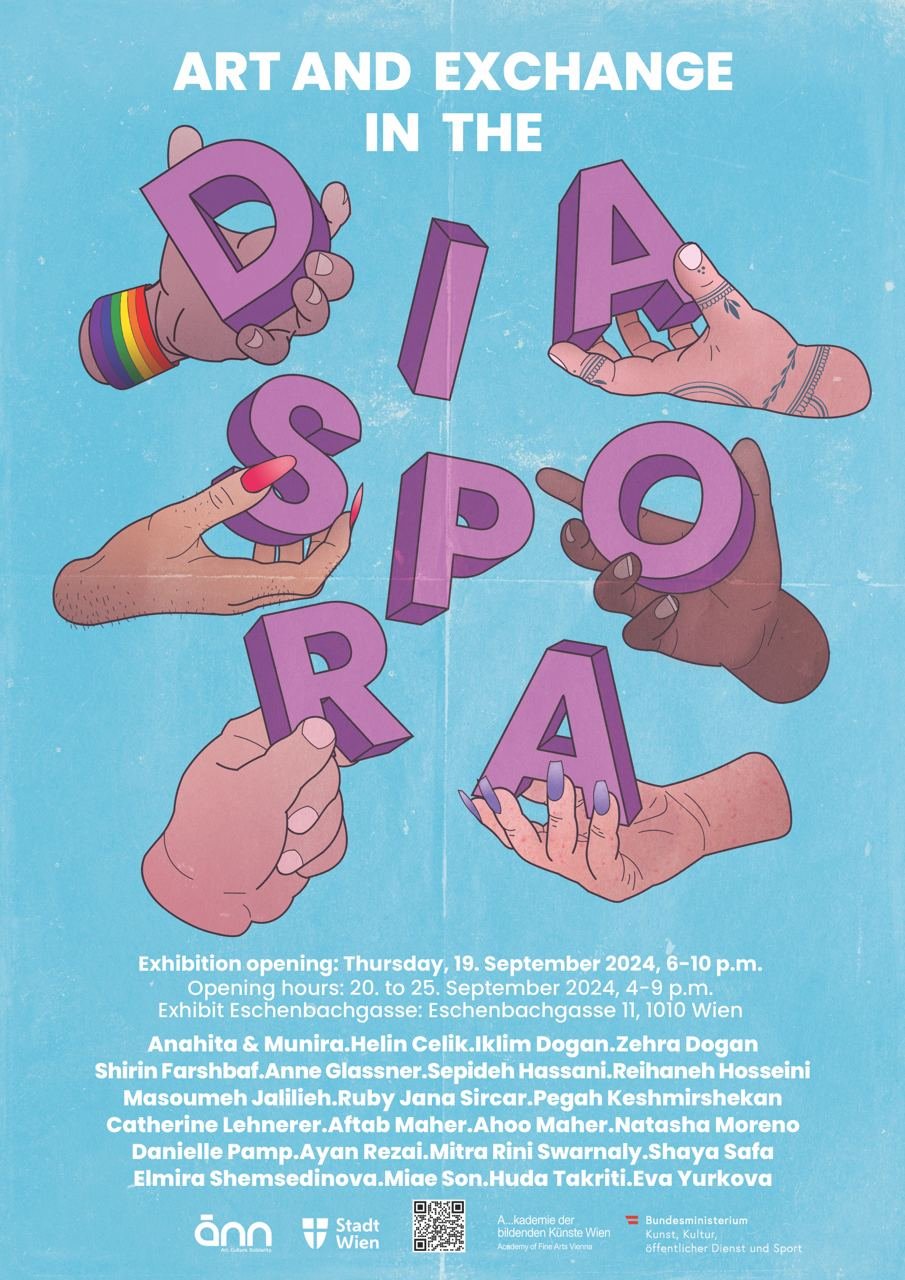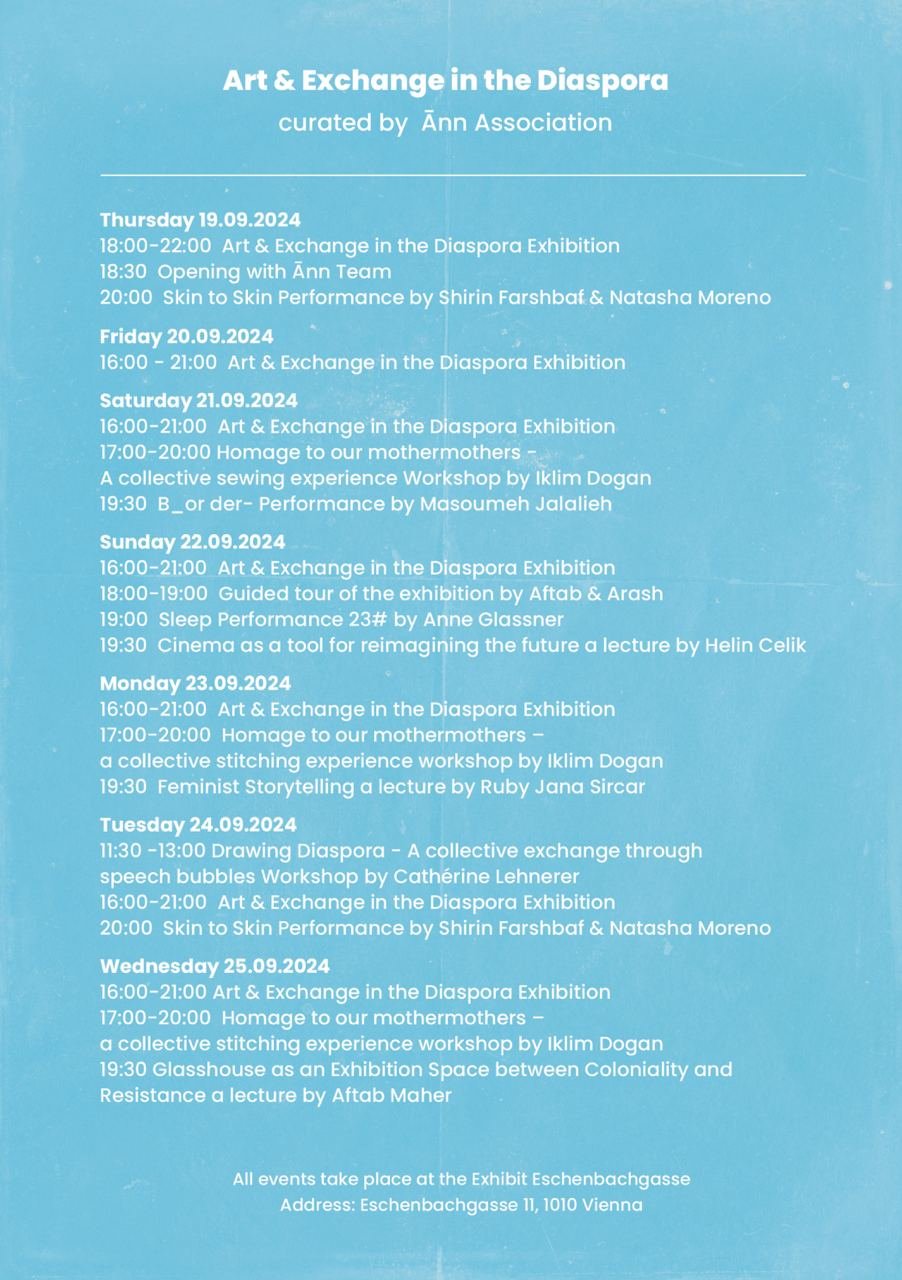Art and Exchange in the Diaspora
The second part of the event series “Art and Exchange in the Diaspora” opens on Thursday 19.10.2024 at 6 pm at Exhibit Eschenbachgasse. The exhibition consciously tries to build bridges between different human experiences and wants to avoid reducing the artists to their diasporic backgrounds. The aim is to focus on the exchange and diversity of perspectives.
The term “diaspora” refers to a population displaced from their homeland due to political, religious persecution, and social and economic conditions. Diaspora art is created by artists who themselves or whose families have migrated from their geographical origins. These artists explore themes of identity, displacement, offering a perspective on diversity and migration. Their work shows how different experiences are transformed through interaction, broadening our understanding of these phenomena.
Stuart Hall’s 1990 essay “Cultural Identity and Diaspora” is a seminal work in cultural studies and sociology. In this essay, Hall examines the migration experience, characterized by displacement, homelessness, and hybridity, arguing that identities are not fixed but are shaped by various cultural, historical, and social factors. His work challenges the concept of fixed identity and promotes a more dynamic understanding of self-definition within the context of migration and cultural diversity.
For centuries, women around the world have fought for their rights and equality, achieving significant milestones through organized feminist movements in the 19th and 20th centuries. These movements advocated for rights such as voting, education, employment, and property, profoundly influencing legal changes and social attitudes towards women. This phenomenon was observed in all regions of Iran, including Kurdistan, Baluchistan, and other areas. women have bravely fought against patriarchy and tyranny for equal rights. Following the tragic death of Mahsa Amini in September 2022, a wave of unity and solidarity swept across Iran and the world. This tragedy awakened public conscience and amplified the voices of protests worldwide.
Our project, “Feminist Approaches in the Diaspora,” aims to connect the feminist revolution in Iran, embodied by the slogan “Woman, Life, Freedom,” with global feminist movements. We believe that the struggles faced by FLINTA* (women, lesbians, intersex individuals, non-binary people, transgender people, and asexuals) share commonalities beyond national borders.
Each year, as we commemorate Jina Mahsa Amini, we remember the great collective awakening that transcended Iran’s borders. This movement keeps alive the hope for a global awakening and a significant revolution in women’s rights. To achieve this revolution, global solidarity is essential to turn the dream of freedom and equality into reality.
We launched this project in May with seven artists and six projects, accompanying them throughout the summer. This exhibition represents a dialogue and exchange of ideas between artists who worked on their projects for three months and those who have focused on these issues at different times.
In addition to these 6 projects involving 7 artists, a further group of artists who have worked in this context have been curated. Each of them, drawing on their lived experiences in different parts of the world, addresses issues such as war, discrimination, the struggle against patriarchy and the challenges of living in white European societies.
This project is not just an exhibition but a platform for interaction and learning. From September 19 to September 25, visitors can participate in workshops, lectures, and performances, gaining deeper insights into the artists’ stories and experiences.

